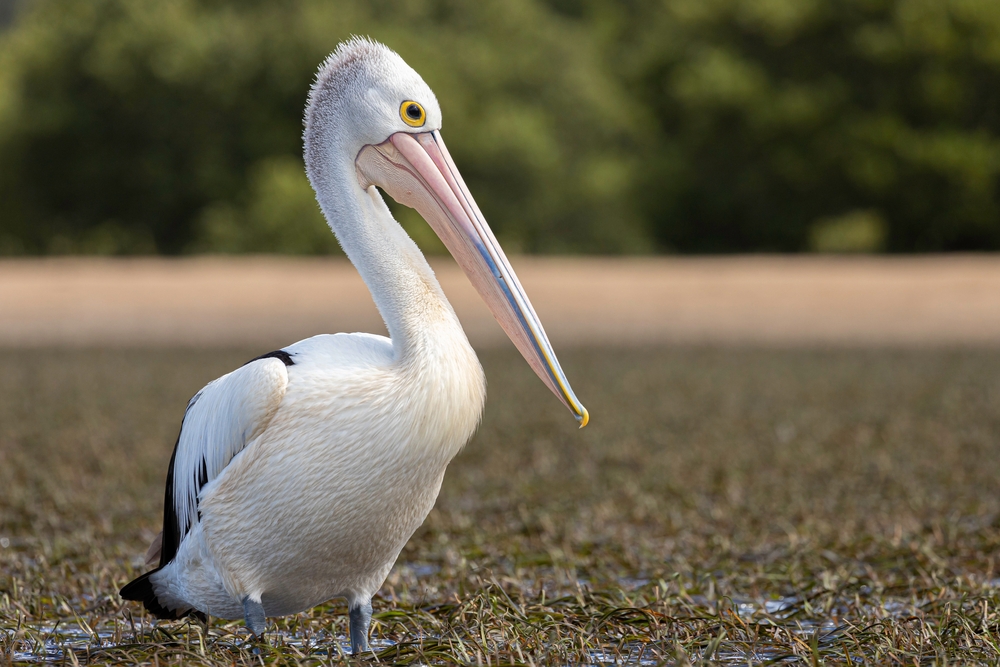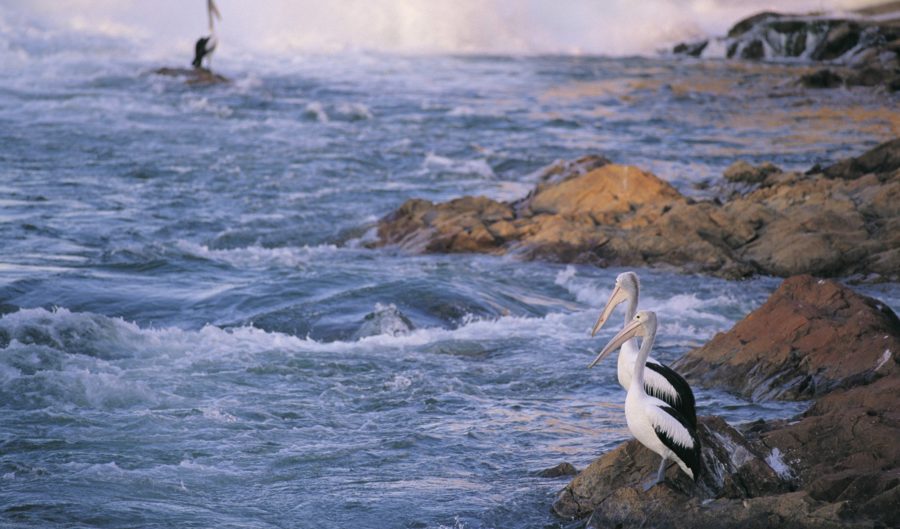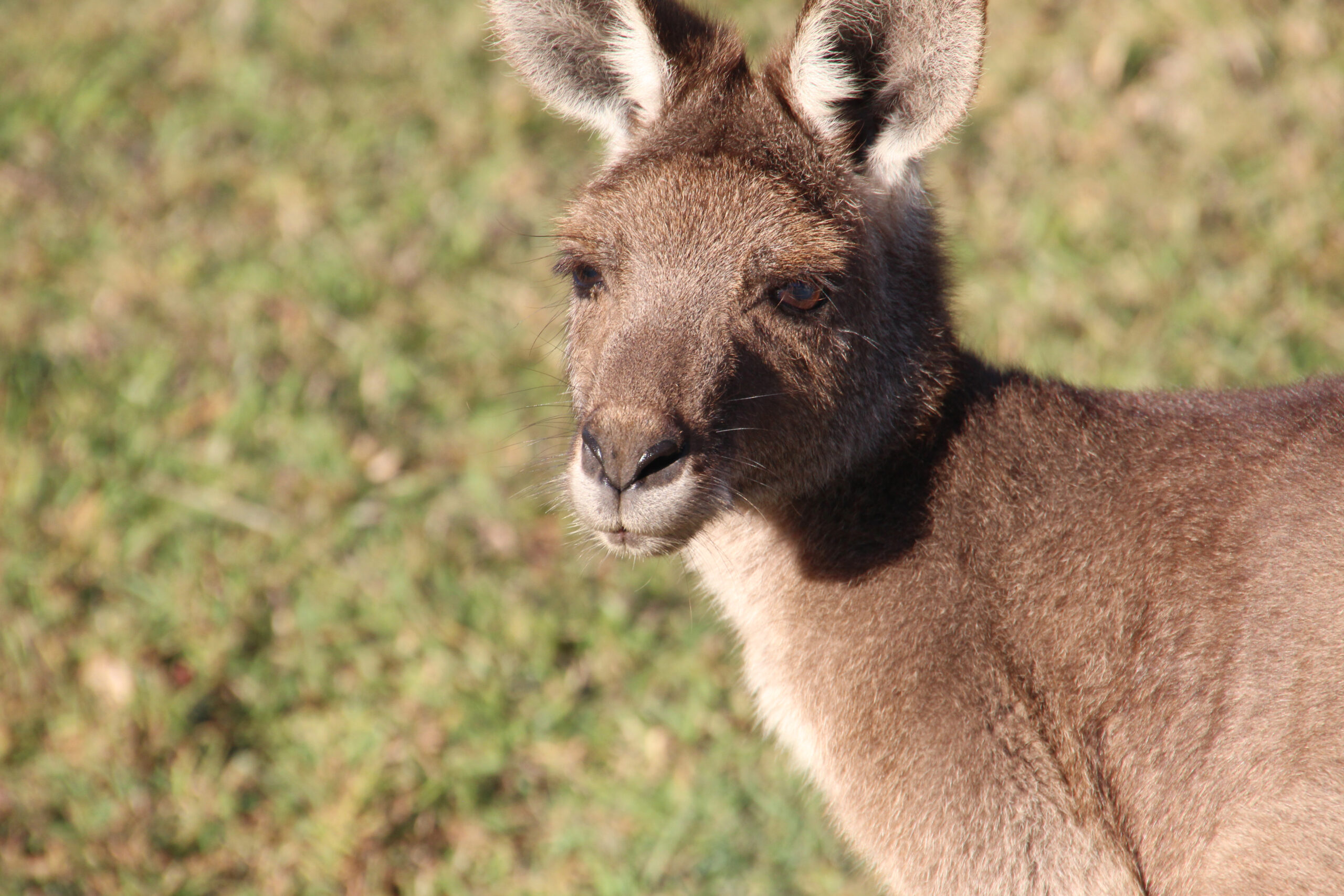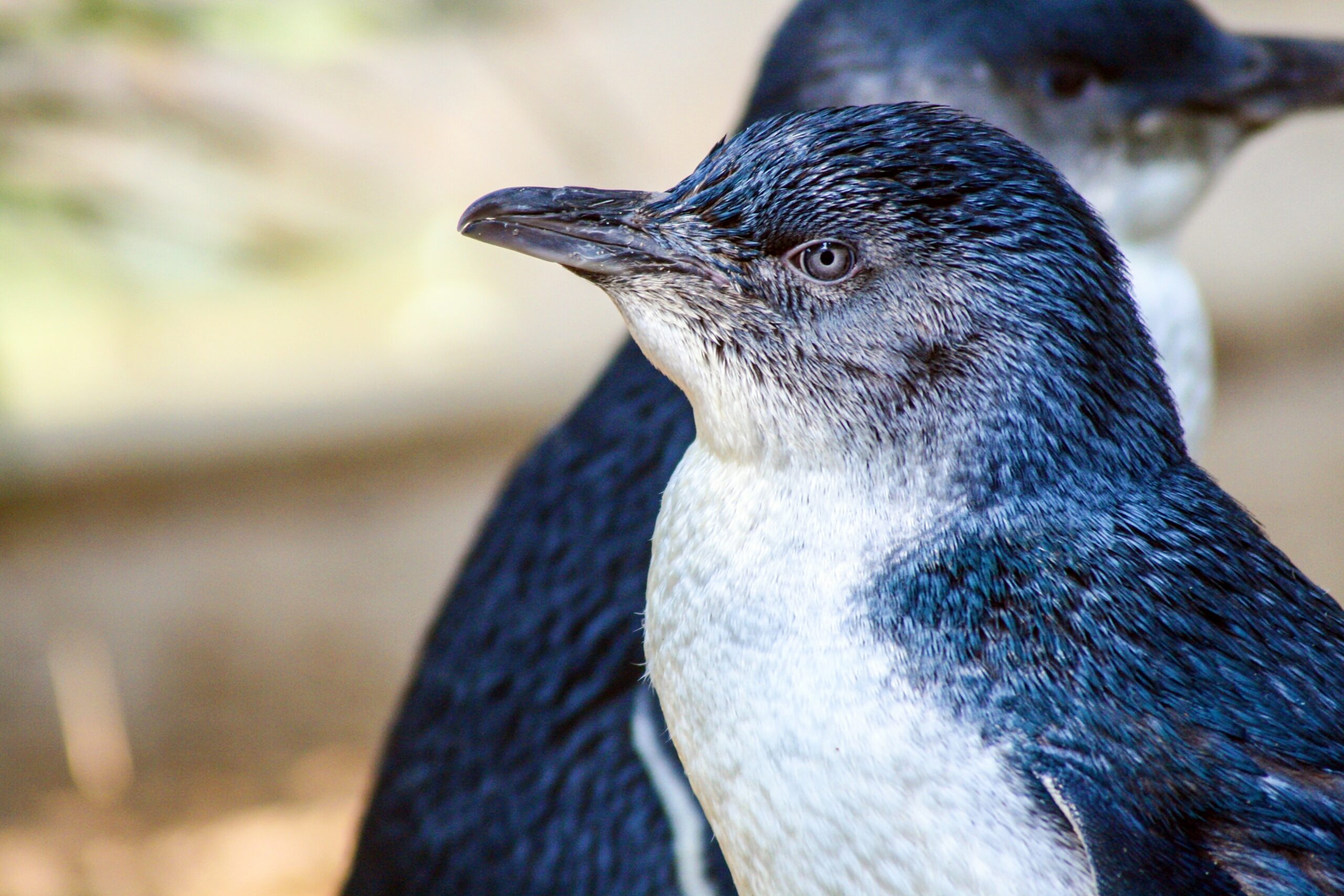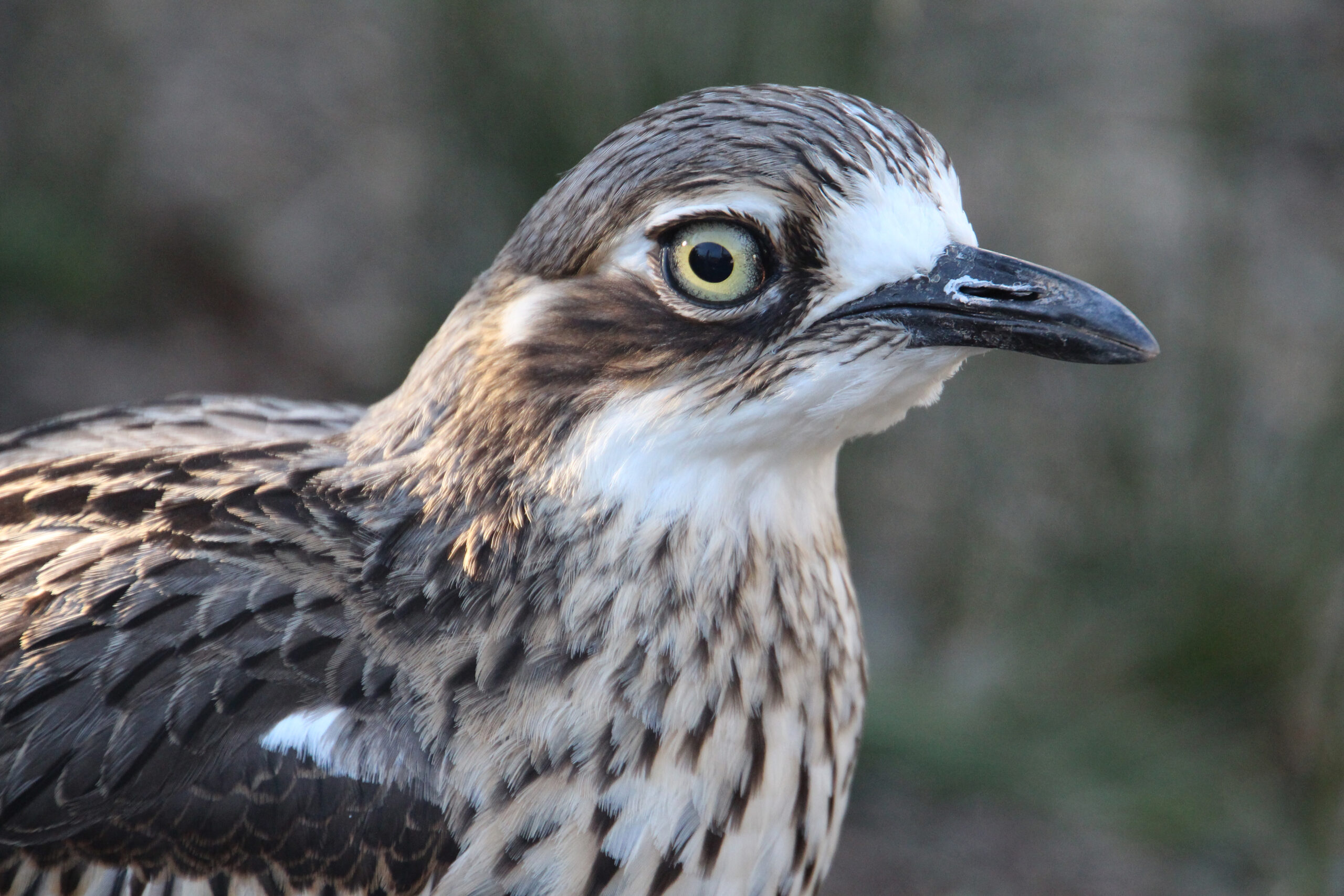| Common name | Australian pelican |
| Scientific name | Pelecanus conspicillatus |
| Type | Bird |
| Diet | Carnivorous, consisting mostly of fish, birds, amphibians, and reptiles |
| Average lifespan | 15 – 25 years |
| Size | Bill length is 40-50cm long, wingspan 2.3–2.5 metres, weighing 4-6.8kg |
With the longest bill of any bird in the world and an impressive wingspan to match, the Australian pelican is synonymous with long stretches of coastline, lakeside jetties and beachside fish and chip picnics.
Often the first on the scene when local fisherman return with a day’s catch, the Australian pelican is found throughout the country, as well as in Papua New Guinea, west Indonesia, with occasional sightings in New Zealand and other western pacific islands.
One of seven species of pelican found throughout the world, the Australian pelican is hard to miss, with a bill that can reach up to 46cm in length for males. The gular pouch (the stretchy patch of skin between the bones on the lower bill) is another distinctive characteristic which can hold over 13 litres of water when stretched.

The pouch and bill play an important role in finding dinner for the Aussie pelican, with the bill’s in-built sensitivity helping to locate fish in murky water. A hook or ‘nail’ on the upper part of the bill is also useful for gripping food. The pouch isn’t used to store marine snacks for later as some may think, but instead acts as a type of fishing net, with the pelican plunging their bill into the water in the hope of catching prey. The bird then draws the pouch to its breast, emptying the water and manoeuvring its meal into position to swallow.
A decedent of an ancient group of birds, the Australian pelican has remained relatively unchanged for millions of years. A fossil discovered in France preserved part of a pelican’s skull, neck, and the entire bill, providing a snapshot of the bird from some 30 million years ago. Amazingly, the fossilised bill was around 30cm long, highlighting how the pelican has barely changed over this timeframe and can be considered a living fossil of sorts.
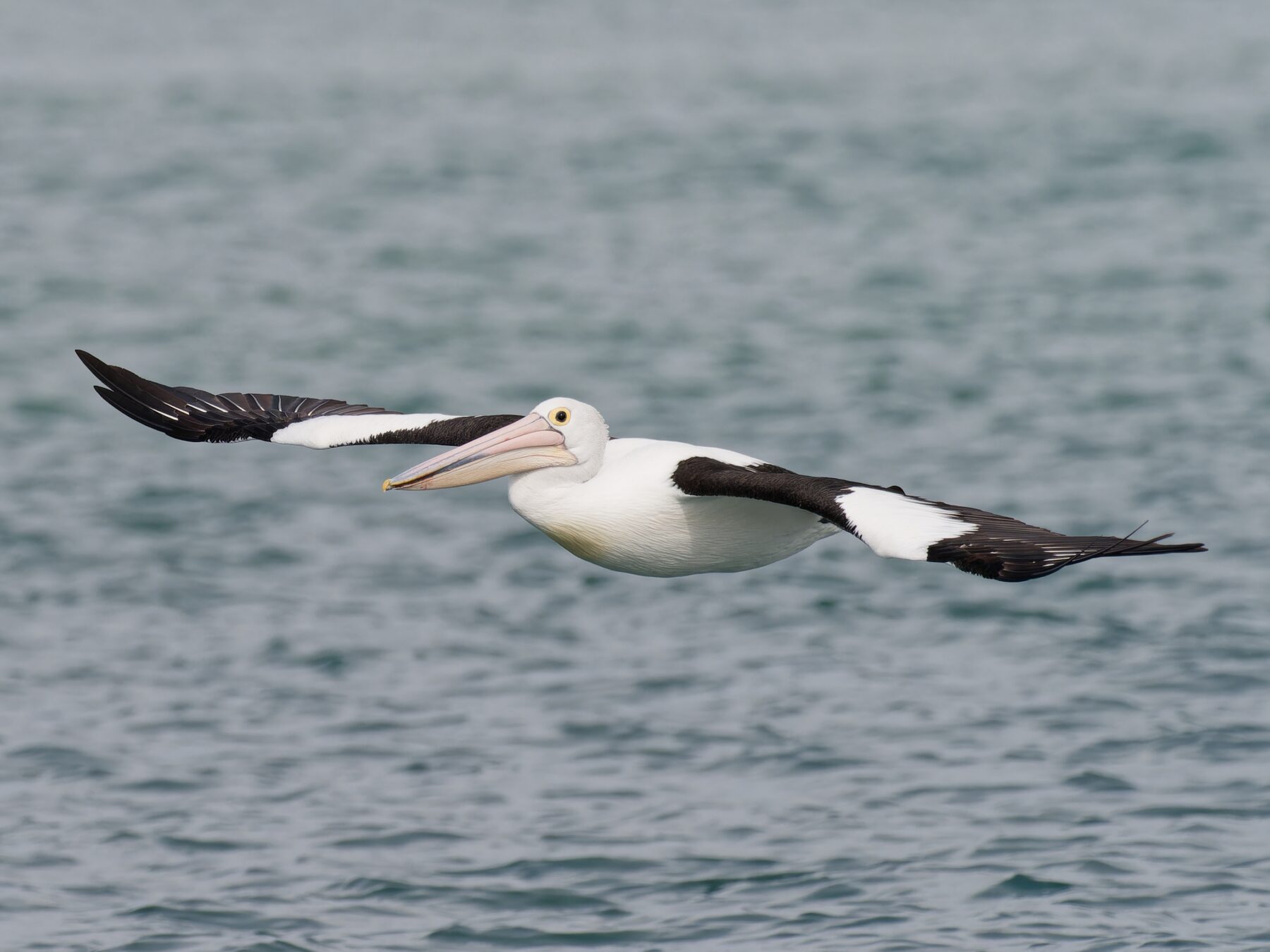
The Australian pelican is a colonial breeder, grouping together with up to 40,000 fellow birds on secluded beaches or islands to mate. Females build a nest on the ground called a scarpe, and line it with nearby vegetation and feathers. Male and female pelicans share the incubation of their eggs, with females laying two eggs per season. Chicks leave the nest to join up to 100 other chicks in a large group known as ‘creches,’ and stay protected here until they can fly at two months of age.
Recognised as an Aussie icon for many, Australia’s Indigenous people have long regarded the Australian pelican as sacred. It was harvested for food by the Yandruwandha people in the Coongie Lakes and the Wangkamura people of South Australia credit the pelican for the creation of opals and fire.
